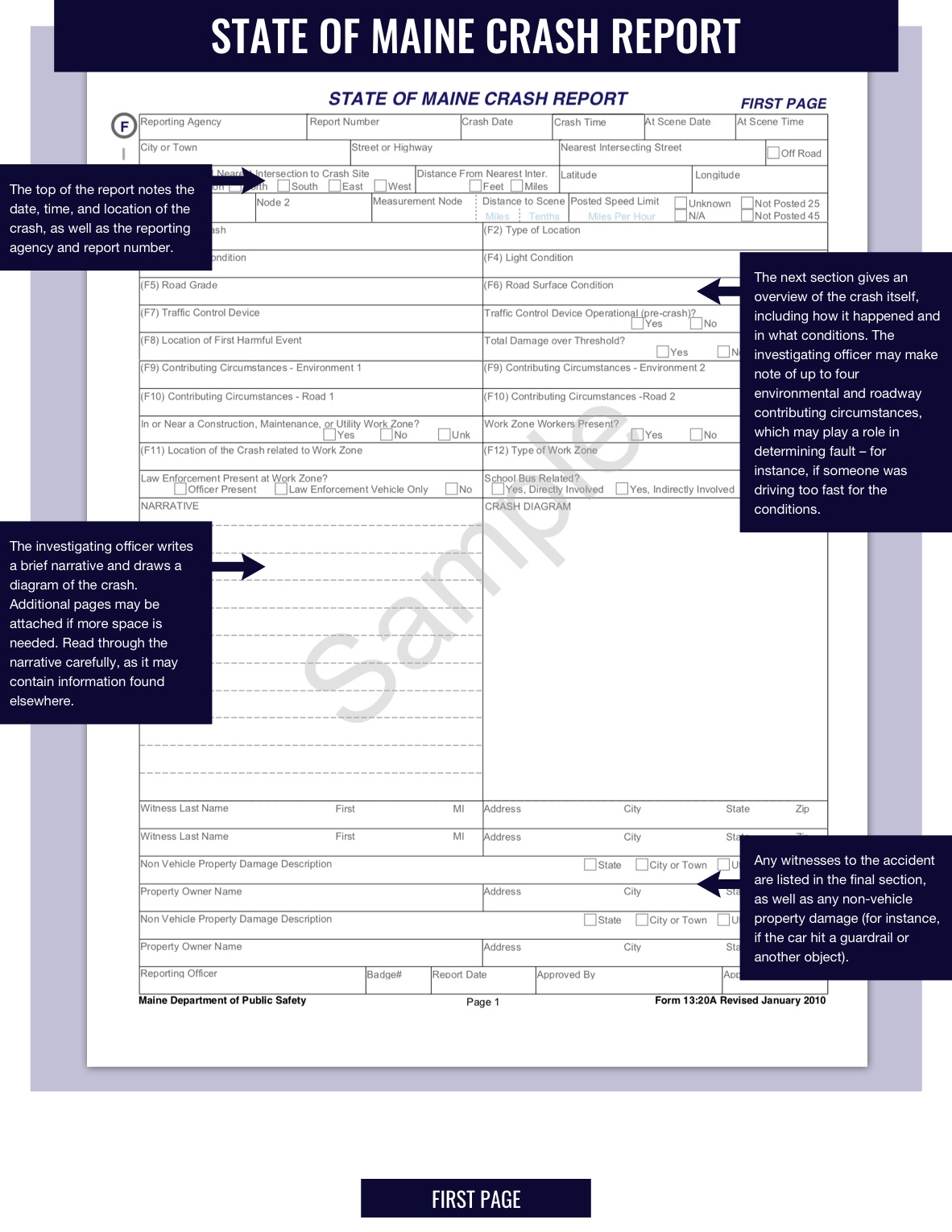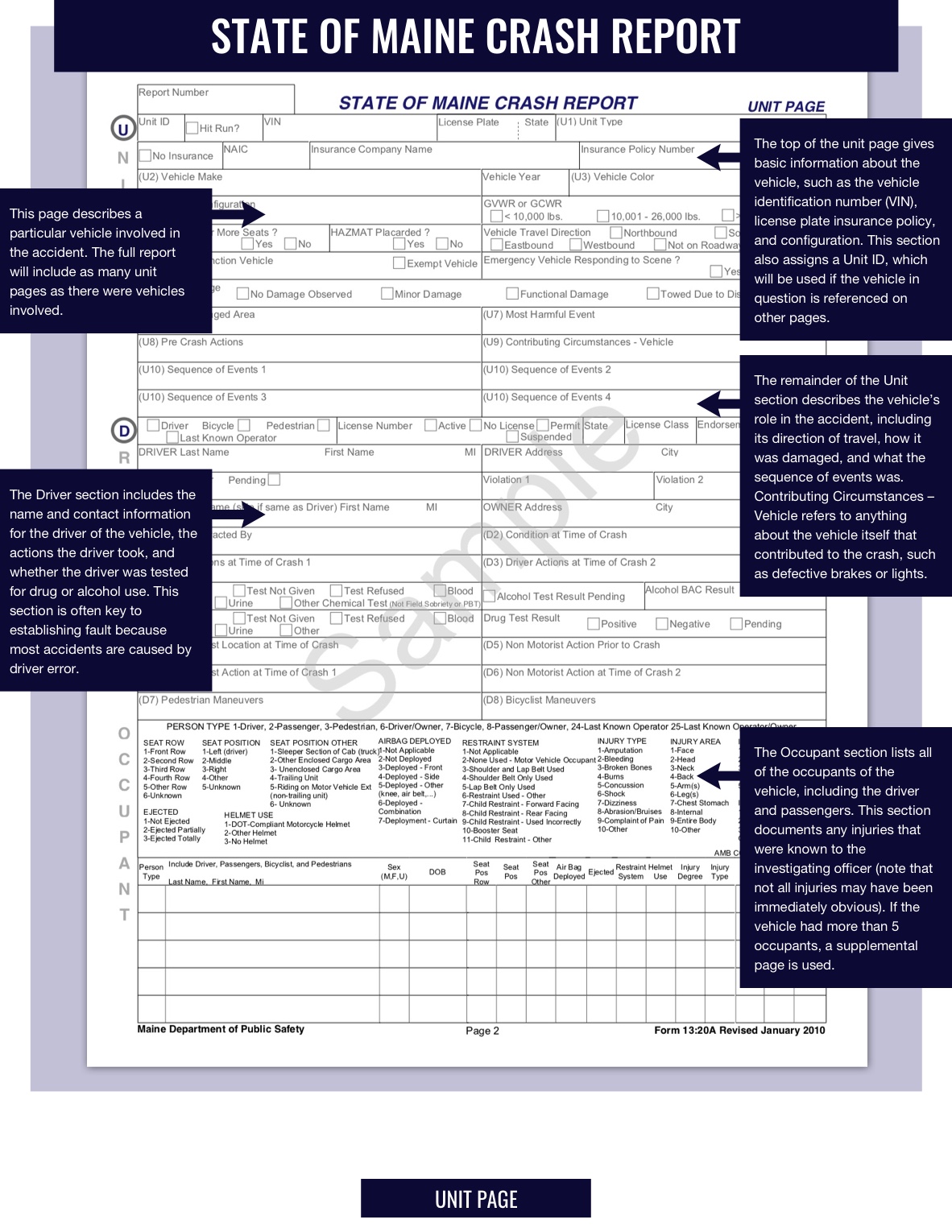In a divorce, the laws of equitable distribution distinguish marital property from separate property. Technically, only marital property, that is, proper...
Car accident claims in Maine are won and lost depending on evidence, and one key piece of evidence is the car accident report filled out by the investigating officer. This document, called a State of Maine Crash Report, is used by insurance companies to determine fault for accidents. In addition, if the police officer who investigated your crash is called to testify in a deposition or in court, their testimony will most likely reflect the content of the report.
It's important, then, that you know how to read and understand this report. Here’s what you need to know:
State of Maine Crash Report
https://www.nhtsa.gov/sites/nhtsa.dot.gov/files/documents/maine_par_rev1_2010_sub_6_2011.pdf

First Page
The top of the report notes the date, time, and location of the crash, as well as the reporting agency and report number.
Click here to download a printable PDF of How to Read Your Maine Car Accident Report.
The next section gives an overview of the crash itself, including how it happened and in what conditions. The investigating officer may make note of up to four environmental and roadway contributing circumstances, which may play a role in determining fault – for instance, if someone was driving too fast for the conditions.
The investigating officer writes a brief narrative and draws a diagram of the crash. Additional pages may be attached if more space is needed. Read through the narrative carefully, as it may contain information found elsewhere.
Any witnesses to the accident are listed in the final section, as well as any non-vehicle property damage (for instance, if the car hit a guardrail or another object).

Unit Page
This page describes a particular vehicle involved in the accident. The full report will include as many unit pages as there were vehicles involved.
The top of the unit page gives basic information about the vehicle, such as the vehicle identification number (VIN), license plate insurance policy, and configuration. This section also assigns a Unit ID, which will be used if the vehicle in question is referenced on other pages.
The remainder of the Unit section describes the vehicle’s role in the accident, including its direction of travel, how it was damaged, and what the sequence of events was. Contributing Circumstances – Vehicle refers to anything about the vehicle itself that contributed to the crash, such as defective brakes or lights.
The Driver section includes the name and contact information for the driver of the vehicle, the actions the driver took, and whether the driver was tested for drug or alcohol use. This section is often key to establishing fault because most accidents are caused by driver error.
The Occupant section lists all of the occupants of the vehicle, including the driver and passengers. This section documents any injuries that were known to the investigating officer (note that not all injuries may have been immediately obvious). If the vehicle had more than 5 occupants, a supplemental page is used.





